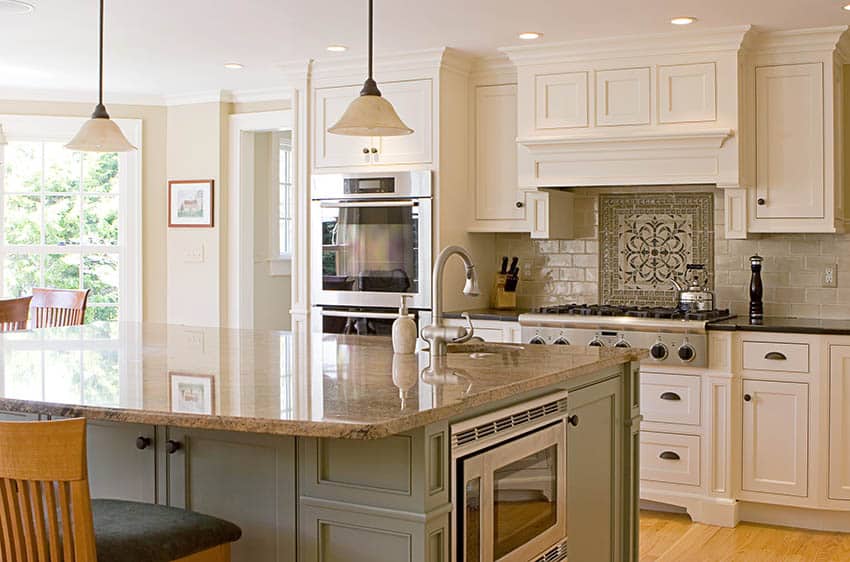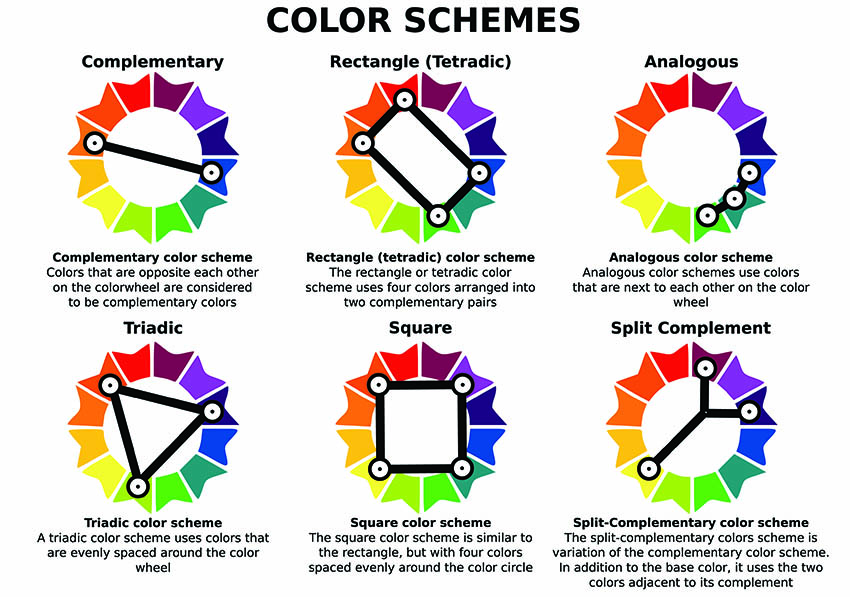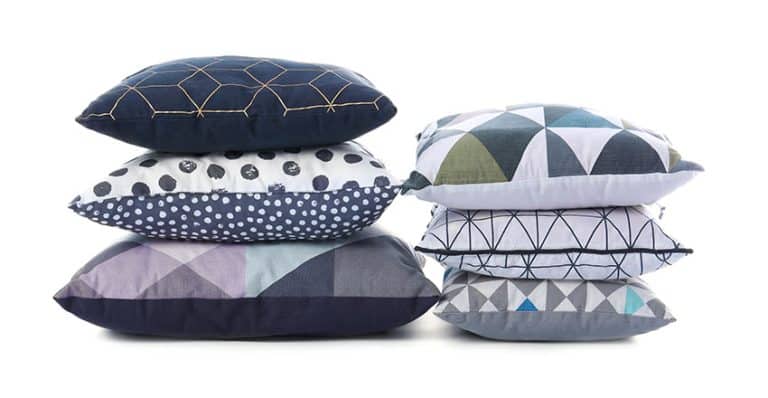How to Mix and Match Granite Countertops

Mixing and matching granite countertops within the same kitchen is a trendy option for your next redecoration project. Getting it right requires knowledge of color theory. You’ll need to choose a primary and secondary color combination that works with your existing decor.
You will also need to know how to compare different types of granite countertops. It is essential when it comes time to select slabs that will work well together.
This article will cover the basics of evaluating granite and applying color theory to your mix-and-match granite countertop project. After reading, you’ll be ready to confidently pick out your slabs and execute this popular new design trend.
Using Two Different Granite Countertops in the Kitchen

One hard and fast rule you should apply, no matter which strategy you choose? Never mix granite on the same counter.
Two slabs of differing concrete that share a seam don’t achieve the mix and match look. They just look mismatched, like you used whatever was lying around. Reconsider using this strategy unless your kitchen has one of these configurations:
● At least one counter and an island, OR
● At least three countertops
If you have two counters separated by a wall, appliance, or cabinet, using a mix and match strategy is possible, but difficult to pull off.
One possible option would be to choose countertops with inverse colors, such as white granite countertops with gray veins for one surface area, and gray granite with white veins for the other.
With one of the configurations listed above, though, you’re in an ideal position to move forward with a mix and match countertop design.
A good guide for mixing and matching is to choose a primary countertop to cover about ⅔ of the surface area. The remaining ⅓ should be covered in a secondary material.
All kitchens are different and don’t necessarily divide neatly into thirds. Use your best judgment and personal sense of proportions to figure out the balance that works for your space.
The success of a mix and match strategy is dependent on finding a harmonious color combination. Harmonious is the term color theorists use to describe color schemes that are pleasing to the eye.
There are three harmonious color schemes you can easily apply to pull off a mixing countertops look in your kitchen; complementary, triadic, or monochromatic. Let’s review.
Complementary Colors
Carrying off a complementary color scheme for your mix-and-match granite countertops starts with a little bit of color theory. You probably encountered the color wheel in elementary school art class.
Complementary colors sit opposite each other on the color wheel and create a high-contrast combination that will make both colors look more intense, bright, and vibrant.
If you found a piece of rare granite that you absolutely love, a complementary color scheme is the perfect way to showcase it.
Orbicular granite or rapakivi granite are examples of rare, highly sought after formations that demand and deserve attention. See more examples of contrasting kitchen countertops here.
Monochromatic Colors
Choosing a primary and secondary material that is the same base color, expressed in different tints, shades, or tones, will bring elegance and refinement to your kitchen.
You can play it safe by restricting the monochrome to the countertops, or extend it to the cabinets for a bolder look. Either way, the result is guaranteed to be classy and look great.
Triadic Colors

With less contrast than complementary colors, but higher impact than monochrome designs, triadic color schemes are easy to pull off and look great. One color is dominant, while two other colors provide balance.
There may already be a dominant color in your kitchen. In this case, use a color wheel to find the two places on the wheel that are equidistant from the first color, and look for granite in those hues.
Types of Granite to Use for Two Tone Countertops
There are two terms you will encounter when evaluating granite: level and grade.
Level refers to the color — not only how rich or vibrant it is but also how rare it is. These are rated on a scale from one to seven, with seven indicating the rarest and richest granite colors.
Grade is used to signify the structural quality, including how many imperfections are present in the stone. A low-grade granite will have many pits and fissures, while a high-grade granite should have virtually none. A mid-grade granite would be somewhere in the middle.
Generally, low-grade, level one granite has been pre-fabricated and is low-quality. Level two, mid-grade granite is the standard choice for custom granite countertops.
High-grade granite that is also level three or above is a premium product that includes many of the scarcest and most beautiful granite formations.
Like paint colors, suppliers use descriptive names to identify the granite they are selling. Some of the best granite countertops to use in a mix and match kitchen are:
Golden Fantasy Granite
Brown, gray, yellow and gold swirl together in this mesmerizing premium granite. It is imported from quarries in Brazil.
Verde Brasiliano Granite
Brazil exports this dark green stone with black veins. This granite is exceptionally touchable when a leathered finish is applied. See more types of green granite countertops here.
Altair Granite
Wide veins of red, gold, and orange wander across the jet black surface of this stone.
Exotic Gold Granite
Quarried from Italy, this stone has patches and veins of purple and gray mixed with brown and black. Use the purple as one element of a triadic color scheme to show off this unique pattern.
Lava Jewel Granite
This stunning stone from India is characterized by gray and maroon veins that slither through a red-brown background.
Blue Pearl GT Granite
Appropriately for granite from Norway, this variety of granite looks like snow flurries falling from the sky at twilight. A muted blue background flecked with white, gray, or silvery bits of stones, this granite can have an almost metallic appearance when highly polished.
Whatever granite you choose, make sure your primary and secondary materials are the same grade and not more than two levels apart. All the countertops in your kitchen should also have the same edge profile.
When you’ve sourced the granite that matches your color scheme, all that’s left to do is schedule installation. You’ll be showing off your two tone kitchen design in no time.
For more related content visit our gallery of quartzite vs granite countertops on this page.














